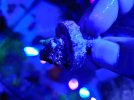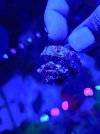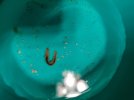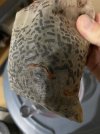You are using an out of date browser. It may not display this or other websites correctly.
You should upgrade or use an alternative browser.
You should upgrade or use an alternative browser.
Bad worm or good worm?
- Thread starter Dmac
- Start date
Pics in white light would help
Agreed, white light is needed.
What was the color?
What was the color?
Looks like a harmless bristleworm. Part of the natural clean up crew.Here it goes
Def not spaghetti worm.Spaghetti worm or bristle worm?
They are harmless for the most part. Just watch out now that you know they are in your tank, you want to avoid the bristles from those. Touch it with a probe or something and you'll see how they get their name.
jayroc24
Member
- Messages
- 48
- Reaction score
- 19
I’m going to tag onto this thread so we do not create another one.... I found these guys and a couple others on my charcoal bag down to the shop from what I can tell it looks like a Bissell worm can anyone confirm what I am seeing?
Attachments
If you meant Bristle Worm, then yes. They are detritivores, so consume scraps which are on the bottom and rocks. I consider them generally harmless, unless you encounter a dreaded Bobbitt Worm, which may be capable of eating fish and other harmless reef occupants. This does not look like a Bobbitt.
Bristle Worms belong to the class of polychaete worms. There are more than 10,000 species, so trying to identify this one may be difficult. Even biologists which specialize in them sometimes have difficulty & often resort to microscopic examination or even dissection to be sure.

 en.m.wikipedia.org
en.m.wikipedia.org
Bristle Worms belong to the class of polychaete worms. There are more than 10,000 species, so trying to identify this one may be difficult. Even biologists which specialize in them sometimes have difficulty & often resort to microscopic examination or even dissection to be sure.

Polychaete - Wikipedia
Even biologists which specialize in them sometimes have difficulty & often resort to microscopic examination or even dissection to be sure.

Polychaete - Wikipedia
en.m.wikipedia.org
Haha, i can confirm this. I sent a couple photos to a specific polychaete biologist, and that was his assessment too. Theres just too many out there. Direct examination is often necessary.
But commonly speaking, yes, this is some type of bristle worm.
My arrow crab and banded coral shrimp eat bristle worms if that’s useful to you. I keep an arrow crab in the sump, he can roam the refugium and sump during feeding or water changes. I keep the coral banded in the display. I don’t know if I would keep both moving forward, if anyone is looking for active eaters.
Similar threads
- Replies
- 0
- Views
- 38






